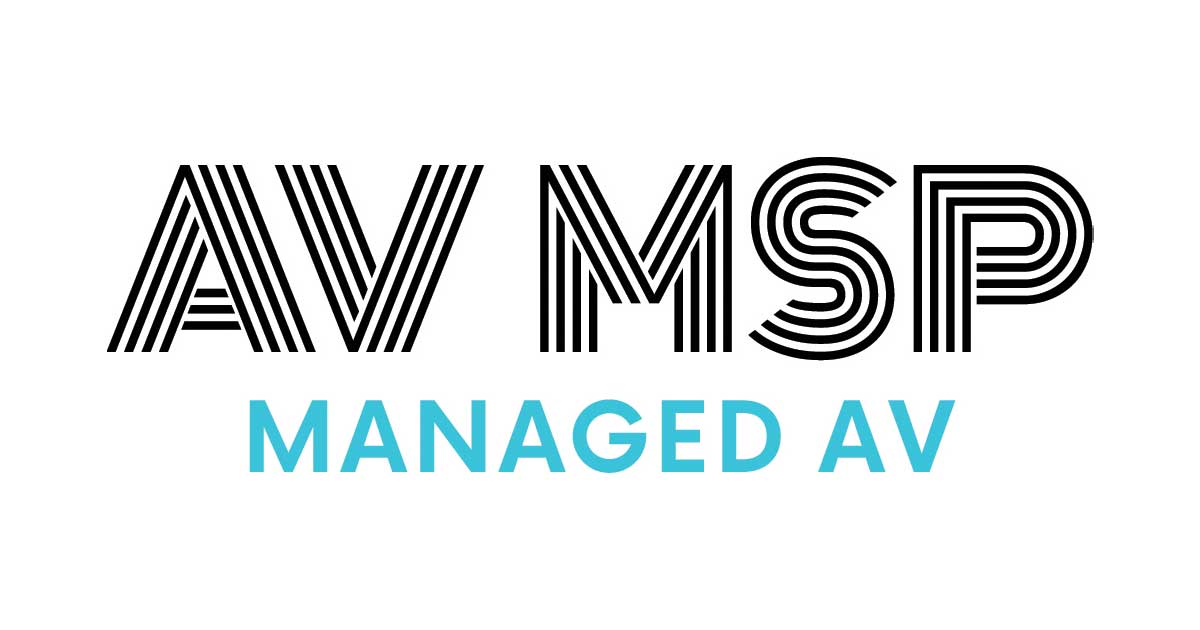Welcome to the April AV MSP newsletter! We’re on a roll!
A few AV MSP news items:
- We will be at InfoComm 2025! If you’d like to meet up, reach on out to sales@av-msp.com and we’ll set up some time. No booth, just free range on the show floor.
- We have launched a Managed Service Readiness Assessment for AV integrators (and other service providers). You can read about it in this blog post, but it’s a way to see if you’re set up operationally to offer managed services. Let us know what you think.
- The next AV Service Roundtable will be on April 24th, 2025 at 12PM Eastern Time. You can sign up here: https://events.teams.microsoft.com/event/9826f0c5-7f3d-4f8f-bbb5-84c3d3fa4b76@c488692e-4c20-4c29-9db1-1f2c1084271c
The Main Story
Our main topic today is about planning. Like a surprise party! Except the surprise is that we have extreme uncertainty over US-initiated tariffs and the associated price and logistics changes. As we all know, a tariff is a tax imposed by one country on the goods and services imported from another country to influence it, raise revenues, or protect competitive advantages. (https://www.investopedia.com/terms/t/tariff.asp) Tariffs can provide some good in theory, but these are considered regressive taxes, as they disproportionately impact lower earners and companies with lower revenue.
This is timely as every AV company and publication seems to be writing about it. We can’t be left behind!
What does that mean for the AV industry?
Whether you’re in the US or not, this is going to have an impact. As we said above, this is a regressive tax. Smaller manufacturers may not survive the tariffs if they’re based outside of the US, but the US is a major source of their revenue. Very little we use in the AV industry is manufactured in the US and even then, there are components critical to production that are not manufactured in the US.
Like always, we lag a bit as an industry. In this regard, we’re not seeing immediate price hikes but there is still discussion between manufacturers and integrators over how long quotes will be honored and when price changes may go into effect. For reference on our closest equivalent, Nvidia announced in February of this year that their price hikes were due to tariffs placed on China (https://www.tomshardware.com/pc-components/gpus/newegg-blames-tariffs-for-rtx-5090-and-rtx-5080-price-hikes), while recently stating that prices will NOT go up due to tariffs. Similarly, computer manufacturers have been giving their customers whiplash, announcing price hikes and then abruptly rolling them back.
Eventually, if tariffs stay in place, some manufacturing may shift to other countries, some manufacturing may come to the US, and there may be stabilization in the coming years. But in the near-term, this means huge disruptions to supply chains and higher prices. Remember that a 25% tariff doesn’t necessarily mean a 25% price increase. It could be 10%, it could be 40%. Smaller manufacturers will need to raise prices even higher to account for losses in sales. Realistically, we’re just looking at permanently higher prices for goods that likely won’t be made in your country if they aren’t already.
How should you plan?
We have long advocated for a standardized AV design. Even if it’s not complete designs for most room needs, create consistency in what gear is generally going to be in AV spaces. While we still think this is the best way to run an AV environment, the current trade situation means reassessing these standards.
We have our favorite little converters, extenders, and utility boxes, but there should be an honest evaluation as to whether those will be viable financially or whether the company will even be able to withstand the pricing changes. Major manufacturers like Samsung and LG shouldn’t have any issues, but plan for a price increase. We are in NO WAY suggesting you abandon small manufacturers for large ones – they need our partnership more than ever. But you should be thinking of an alternative if the worst happens.
Some commentators (linked in that first paragraph) suggest buying up hardware before tariffs hit. While that may be a good strategy for raw materials like steel and aluminum or for components like microprocessors, purchasing finished devices could be a bad idea in some circumstances. If you’re an integrator, this takes up storage space and puts a large chunk of debt on your books. If you’re purchasing hardware on credit, it’s even riskier and the math may not work by the time hardware is paid for by customers and debt has built up. If you’re a customer, purchasing hardware for future projects could be a good idea, but you will start the warranty timer once you take ownership, plus the same issue of storage. All we’re saying is to carefully consider all scenarios if you are choosing to pre-buy hardware.
We also need to consider what might happen if labor begins to be affected. During the 2020 COVID-19 pandemic, we saw many workers laid off while some chose to retire. While this should not be pandemic-level labor losses, the downturn in work could result in more workers being laid off. We, as an industry, risk losing even more people while we’re currently struggling to find new talent. To keep future resources available, raising labor rates might be required. Customers need to understand that higher labor might accompany higher hardware costs for this reason.
The bottom line is there are a lot of changes that could happen. Being prepared for them without doing anything drastic or sudden will help you process these changes as they come instead of being blindsided by them.
Homework!
Here are your action items, like you don’t have enough to do:
If you’re a customer:
- Start discussing with your management the financial impact this will have on your planned AV integration projects.
- Evaluate your AV hardware standards and begin direct discussions with your reps. Ask them how they plan to respond to the tariffs, when they anticipate price increases, and the long-term plan (moving manufacturing, permanently higher prices, etc.). If you cannot get straightforward answers, that’s still an answer.
- Consider software solutions that could replace hardware. This will require additional labor to support, but the difference could be negligible.
If you’re an integrator:
- Same as above, discuss the financial impact this could have – fewer integration projects, loss of manufacturers, shortages in product, and reduced value of projects.
- Contact ALL your major product reps and request their plans. Get current rates sheets and get guarantees on how long quotes are good for.
- Discuss possible cost increases with your current customers. This should include possible labor costs to cover slow periods in the future.
- Consider some alternative revenue sources. Managed services, for instance (not that we’re biased). There’s no tariff on software and people.
And for everyone:
- Remember to be kind to folks as you discuss this. They’re going through the same confusion and uncertainty you are; it’s out of their control. Don’t preemptively terminate relationships before there’s a need.
DISCLAIMER: we might be completely wrong about this. We’re not economists. We hope we are wrong. But it doesn’t hurt to have a plan in place. It’s called having a Risk Plan, something we’ll talk about in the future.
What is “Secure”?

We’ve alluded to the idea that you might need to know a bit more about security than you do. This is a tough discussion because most of us are not qualified, nor do we have the time to learn how to determine something is secure by any direct means. We either need to hire someone to do it for us or find a trusted body.
FedRAMP is a group that certifies the security architecture of private sector cloud services for government use. There are extensive checklists, like what some of us have gone through with third party risk assessments with customers (or you administer to your vendors). We benefit from this because those cloud services are checked in on by a body that knows what it’s doing and has an interest in doing things correctly. HOWEVER! FedRAMP is moving to automate the approval process and likely hand it over to the private sector. (https://www.nextgov.com/modernization/2025/03/fedramp-announce-major-overhaul-next-week/403926/ )
You can see the issue here. Self-regulation or regulation by an industry that stands to make things easier is not something we feel comfortable with. We don’t have a lot of details just yet but now would be a good time to re-examine how you determine what is secure.
News and Links

Some years back (2017) Samsung acquired Harmon. They now report that Harman has started to grow after a few rough years. https://www.sammobile.com/news/samsung-proves-doubters-wrong-about-harman-acquisition/
For Women’s History Month, Commercial Integrator has posted interviews with a few of the great women working in the AV industry. You can read all of those here: https://www.commercialintegrator.com/?s=%23HerAVStory
If you’re attending InfoComm 2025, r/CommercialAV subreddit and Discord are having a meet up hosted by AtlasIED. They’re a great resource for anybody in the industry; this is a chance to meet those mysterious faces behind the usernames. Sign up here! https://share.hsforms.com/1OxmYR62uRuy98ztvVpcHKAbskg9
We’ve used a few images in this newsletter (but not in the email version – go to the online version to see them). They’re by Markus Winkler who has knack for making nice photos of Scrabble tiles related to current events. Find him here! https://www.pexels.com/@markus-winkler-1430818/
The Marketing
Thanks for reading, here’s an ogłoszenie (that’s Polish for advertisement)! We are AV MSP. We provide audio visual managed services directly to corporations, universities, and other organizations with large AV environments. We also provide services in collaboration with AV integrators and IT MSPs. All of this is done with modern ITSM software and standards. If you’re looking to elevate your services in the new year, please reach out to us at sales@av-msp.com to chat. You can also follow us on LinkedIn at https://www.linkedin.com/company/av-msp/, on Bluesky at https://bsky.app/profile/av-msp.com, and of course on our website at https://av-msp.com.

Like this newsletter and want to get them delivered to your mailbox whenever we bother to write one? Sign up below.

